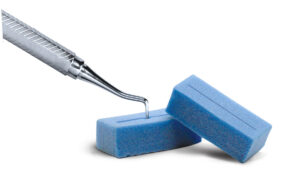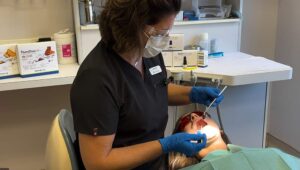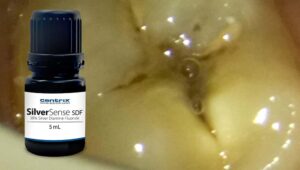Combat Root Caries in Mature Adults With Prevention for Life®

Mature adults are at increased risk for root caries due to a combination of exposed roots and xerostomia. Cementum and dentin have half the mineral content of enamel so they demineralize more rapidly, with an increase in cervical lesions and decay. Xerostomia, from both reduced salivary flow and prescription medication (more than 500 regularly used drugs cause xerostomia). As a result, we see faster and more serious decay in root caries. Therefore it is important to complete a risk assessment and educate your patients on preventive care, how fluoride varnish can reduce risk and how it can save the cost of further restorations.1 Average cost for a restoration: Amalgam (silver), back tooth: $132, Resin composite (white), front tooth: $155, Resin composite (white), back tooth: $170, and Gold crown, back tooth: $1,123.2 The average cost for a fluoride varnish is less than $1.00.The numbers speak for themselves!
It’s important to educate your patients about the risk factors that might predispose them to root caries. Below is a list you should familiarize them with along with an outline of xerostomia-causing drugs. Helping your patients understand their risk level will encourage them to take the appropriate prevention measures that will keep their teeth and gums healthy.
Risk factors for root caries include:
- Decay in previous 36 months (high bacterial load)
- Xerostomia (decreased salivary flow)
- Xerostomia caused by medications (over 500 are known to reduce salivary flow)
- Exposed root surfaces
- Systemic diseases including diabetes, hypertension, Alzheimer’s, and Parkinson’s
- Dehydration
- Inadequate oral hygiene
- Diminished manual dexterity due to stroke, arthritis, or Parkinson’s disease
- Cognitive deficits due to diminished brain health, mental illness, depression, Alzheimer’s disease or dementia,)
- Overhangs and open margins
- Acidic oral pH
- Changes in diet
- Head and neck radiation treatment
Some popular xerostomia inducing drugs include:
- Anti-depressants
- Pain meds (narcotics)
- Sedatives
- Anti-psychotics
- Alpha, Beta and Calcium Channel-blockers (HBP)
- Antibiotics
- Antihistamines
- Cold/flu medications
- Also, meds for obesity, urinary incontinence, GERD, epilepsy, acne, and erectile dysfunction
Treatments for Recession and Root Decay
The appropriate treatment of exposed roots depends on the extent of the risks and the severity of the decay. Intervention treatments are likely to include more frequent appointments with the dental hygienist, use of interproximal devices to clean difficult to reach areas, and use of home remineralization products. If the recession is caused by periodontal disease, treatment usually begins with scaling and root planning therapy that is followed by a fluoride varnish application. Continued intervention therapy is imperative for patients with exposed root surfaces because destructive root caries can progress rapidly. Adults at high risk should be considered for three month recalls that include not only scaling and deposit removal but repeated fluoride varnish applications and risk reduction conversations. Stopping root caries requires persistence but it is possible!
Just think of the number of adults that could benefit from education and fluoride varnish treatment! It is staggering!
Adult patients have the greatest need and present the greatest opportunity for you to combat caries with our Prevention for Life® program. Don’t wait, join the movement today and help your patients keep a healthy smile for a lifetime!
For information on our fluoride varnish, FluoroDose®, please visit our website.
1. ADA Center for Evidence-Based Dentistry (November 2013) Topical Fluoride for Caries Prevention. Retrieved from http://www.ada.org
2. https://www.nerdwallet.com/blog/health/medical-costs/how-much-does-a-filling-cost/
Photo credit: Image by wayhomestudio on Freepik
Boost Your Expertise with Our Lunch & Learn Programs!
Join our engaging Lunch & Learn sessions and take your dental skills to the next level. Enjoy a meal while learning from experts about evidence-based solutions, prevention, restorative procedures, and more. Enhance your practice and patient outcomes with our comprehensive courses.
Share
You Might Also Like...

Composite Sculpting is a Breeze with LubeCube!
Composite sculpting doesn’t need to be a pain! Learn more about why LubeCube is a must-have accessory for restorative dentists.

The Value of Prevention: How Simple Preventive Procedures Transform Your Practice
While most of us agree that preventive care is important, the truth of the matter is, prevention gets placed on the backburner of most dentists’ minds.

Silver Diamine Fluoride is Not Just for Kids!
Dentists working with elderly patients and patients with disabilities also saw the value of the product for their patients and swiftly added SDF into their toolkits.


